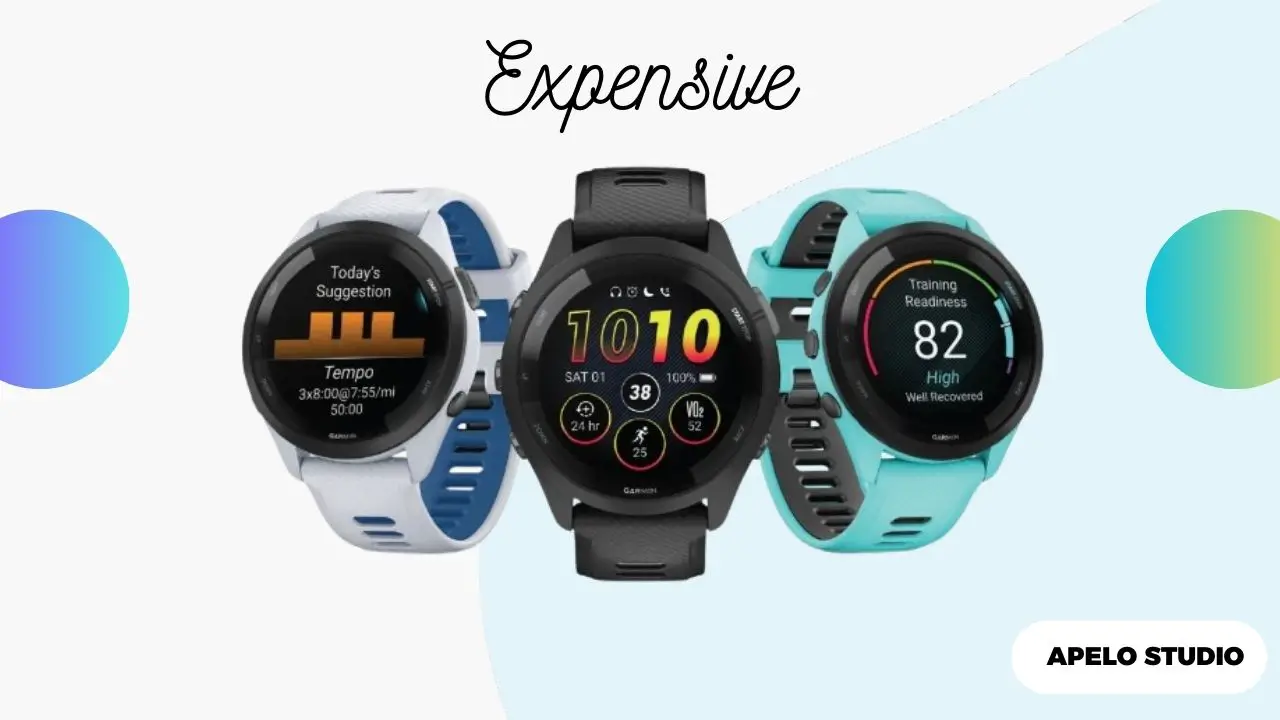Garmin watches are expensive because they’re truly functional. The latest smartwatches in the brand’s lineup feature solid design, smooth navigation, and powerful sensors.
Advanced features such as solar energy charging, satellite imagery, and PacePro Coaching make Garmin watches some of the best sports watches in production to this day.
Garmin’s focus on customization, superior functionality, real-time activity tracking, accurate GPS navigation, and user experience put the brand’s watches right at the top of the competition.
As Garmin continues to make rugged, feature-packed, and fully functional sport watches, expect the price for new smartwatches to go higher or remain relatively the same. Let me explain why.
1. Stainless Steel Bezels and Sapphire Glass Display
The most expensive Garmin watches feature stainless steel bezels with an excellent finish.
Stainless steel is an extremely strong material with a high degree of rust, corrosion, and scratch resistance. The material can’t break or crack easily if it accidentally hits a hard surface.
As hardy as it is, stainless steel is expensive to produce because it requires a combination of multiple alloying elements such as copper, nickel, and chromium. And because the material is expensive, it adds onto the cost of production for Garmin smartwatches.
Moreover, Garmin uses sapphire glass to build the display of its high-end watches. Like diamonds, breaking and cutting sapphire is hard, and the machines used for this very purpose easily wear out. Garmin has to invest more money into these machines, which partly explains why you have to pay more for some watches.
2. Built-in NFC Chip for Contactless Payment
Some Garmin smartwatches, such as Forerunner, Venue, and Fenix Series, have built-in NFC chips for contactless payments wherever Garmin Pay is accepted.
This contactless payment technology is easy to use. You add your Credit/Debit card to the watch via the Garmin Connect, and then pay for goods and service by holding your wrist about 5 to 10 centimeters above a contactless card reader.
Currently, deploying Garmin Pay without compromising security takes time and requires the company to spend a lot of money on initial implementation and regular maintenance.
3. Accurate Heart Rate Monitor
Garmin smartwatches tends to provide accurate heart rate reading thanks to the quality of the tools and materials used to build the optical heart rate sensors.
The heart rate data collected helps you determine how much calories your body burns during a workout, how much weight you’re likely to lose, and how intense to make your workout.
Garmin watches didn’t always have reliable heart rate monitors, but they’ve improved over time as their technology go better. To this day, Garmin spends more money to develop reliable HR sensors for its latest watches, which explains why some of its releases are quite expensive.
4. Reliable Satellite Imagery
Your Garmin Watch will keep loading satellite maps as long as you have a clear view of the sky. Satellite imageries are good for different outdoor activities, including cycling, running, and hiking, as they allow you to determine the best routes to take.
When it comes to hiking and backpacking, Garmin watch GPS gives you an ideal of how steep certain parts of the mountain are, making it easy for you to determine the safest route to use.
Although satellite imagery is a useful feature, it’s one of the most expensive technologies for Garmin to maintain.
Garmin doesn’t have its own satellites in space. The company relies on Iridium network to power its GPS smartwatches, ensuring these products get stronger signals and seamless connection even in places where cellular towers can’t reach. Since Garmin depends on a third-party company to provide accurate satellite imagery information, the expenses do come at a high cost.
5. Solar Energy Charging
Fenix 7X and Instinct Solar Edition are examples of the most expensive Garmin watches. These smartwatches support solar charging, so you never run out of battery power in the days you go to workout for hours.
Adding solar panels in a smartwatch isn’t as easy. Garmin uses lens materials tiny enough to fit in a watch. And they put a high price tag on these watches to offset their cost of production.
6. PacePro Training Subscription
PacePro Training is available to Garmin Adventure and Sports watches. The purpose of PacePro Training is to help you stay on pace and grade your activities. For example, PacePro Training will suggest a pace you need to put up with to complete a fast and intense workout.
PacePro is so flexible that it changes if your environment changes. For example, PacePro gives you a new pace good enough to keep you on track if you go uphill.
Garmin charges more for the watch to cover all the expenses of running and maintaining PacePro Training.

